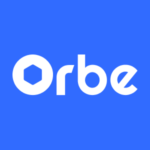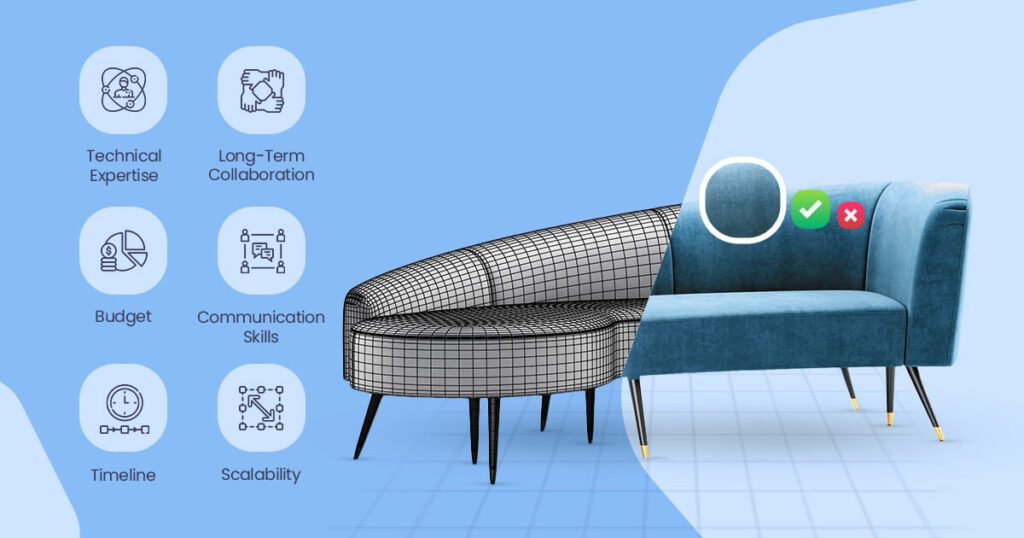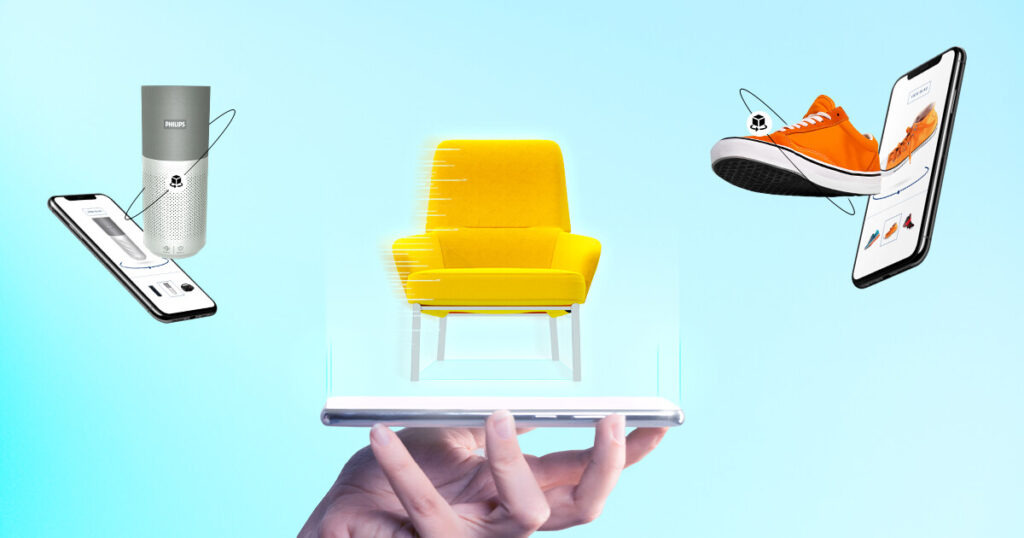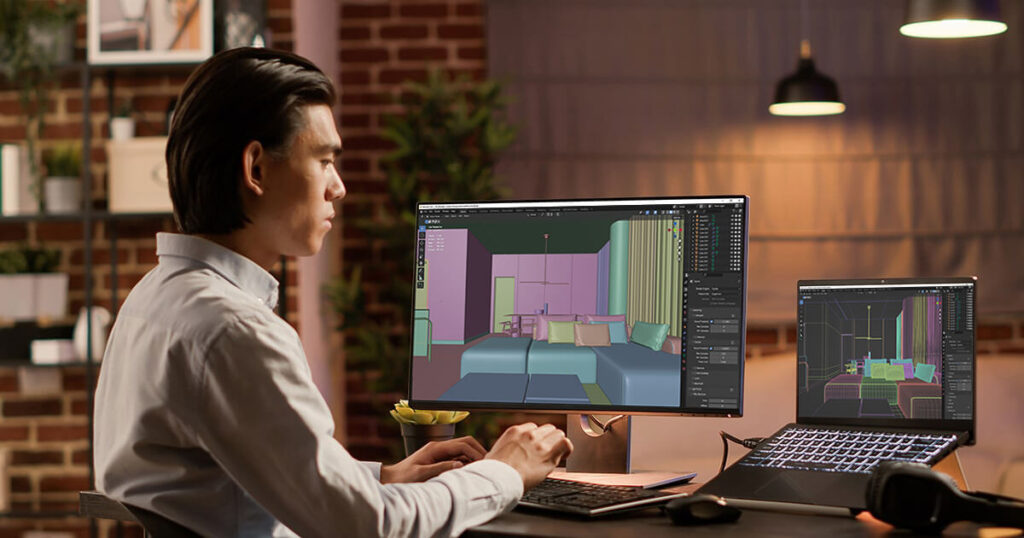As 3D furniture visualization is concerned, 3D file formats are extremely important during every design process, weather you are designing an elegant chair or a room. The choice of 3D file formats used affects your models’ behavior within different software, as well as their compatibility and quality when it comes to the outcomes. Selecting the right 3D file formats is essential for seamless collaboration among team members, expedient procedures, and improved image quality.
The 3D file formats is not merely a technical aspect, as it determines the efficiency of your workflow and the final visual output. For instance, when a file format characterized by weak compression is used, there might be some bulky files that slow down rendering times; conversely, choosing an incompatible format may result in errors that arise during the transfer of files across different 3D software. To streamline your modeling, rendering and even animation processes, it helps to understand the intricacies of each one of these formats.
This blog post is designed to be a comprehensive guide to the three most common 3D file formats used in furniture modeling and rendering. We’ll look at the pros and cons of each format so that you can choose wisely, thus improving your 3D visualization process while achieving excellent results in designing furniture.
Common 3D File Formats
Overview of Widely Used Formats: OBJ, FBX, STL, and COLLADA
The 3D furniture creation and rendering industry is characterized by several major 3D file formats. Widespread format examples include OBJ, FBX, STL as well as COLLADA which have a lot of versatility and compatibility with many 3D software platforms.
Characteristics and Use Cases of Each Format
- OBJ: This is a straightforward and well-supported format which allows the static models and geometry transfer; OBJ files are mostly used in the 3D modeling applications such as Blender, or 3ds Max, especially for furniture design without any animation.
- FBX: Favored for its robust support on geometry as well as animations; therefore FBX would be ideal for complex furniture projects that involve rigging or other animations. It is very compatible to Autodesk software hence making it widely used in furniture visualizations.
- STL: It’s an industry standard format known as STL (Stereo lithography) that is used in most of the 3D printers today. Unlike other formats, an STL file only contains data about object geometry devoid of color and texture details like Lego bricks without colors or markings on them. These files can be used to make prototypes or physical models of different pieces of furniture.
- COLLADA: An open-standard format supporting both static and animated models; COLLADA would be good for transferring data between various 3D applications while maintaining animations along with material information accordingly.
Comparison: File Size, Compatibility, and Ease of Use
The smaller and simpler tends to be OBJ files while the larger ones would usually include more details especially on animation data in case of FBX files. In comparison STL files are minimalist which makes them suitable for 3D printing whereas COLLADA lies somewhere in between file size and complexity with a lot of compatibility options available. Different workflows require different types of formats which makes it necessary to choose carefully.
Specialized 3D File Formats
Introduction to Formats Used for Specific Industries
3D file formats, in addition to common formats, are specific to the 3D industry that includes Computer Aided Design (CAD), gaming and animation. Each format is specifically designed for different uses enhancing their functionality and performance within that application.
Formats: 3DS, PLY, and GLTF
- 3DS: Initially created by Autodesk for 3D Studio, 3DS files are generally used in older software and projects. They include complex 3D geometry and animations but are slightly constrained when it comes to materials and textures. However, due to its ability to remain useful through time, the 3DS remains an important format for legacy compatibility.
- PLY: An option that is frequently used for point cloud data and 3D scanning is the Polygon File Format (PLY).It allows detailed vertex data support and is often used in applications that require high level of geometric accuracy like scanning furniture in three dimensions.
- GLTF: Popularly called, “JPEG of 3D”, GLTF has been optimized with a view to contemporary applications like real-time rendering. Consequently, web-based three-dimensional applications, as well as virtual reality and gaming make extensive use of it because it simplifies rendering process greatly. In addition, GLTF files are lightweight while featuring advanced properties such as physically based rendering (PBR) materials.
Advantages and Limitations
Specialized formats are vital: for instance, 3DS files help with older projects because of backward compatibility whereas PLY collects detailed geometric data better than any other format does and GLTF supports quick rendering in real time applications. Nonetheless, they come with their demerits too; for instance, 3DS may lack modern features while PLY can be large and cumbersome but on the other hand GLTF’s versatility may not find itself in all legacy software. Therefore, it is imperative always to choose a suitable format that meets your project needs in its specificity plus its intended use.
Choosing the Right 3D File Formats
Factors to Consider When Selecting a File Format for a Project
Several things shall be considered when selecting a 3D file formats for your furniture visualization project. First and foremost, take into account how complex your model is. For complex movies with animations formats such as FBX and COLLADA are perfect but for static models simplicity will do it hence OBJ. Then comes the degree of detail required e.g. textures and materials determine what format is then used according to them. Finally think about where you want to use the model whether online; during 3D printing process or high quality renders depending on applications it has been designed for.
Tips for Ensuring Compatibility with Software and Hardware
To ensure smooth integration with your software and hardware, verify the format’s compatibility with your tools before starting your project. Most 3D modeling and rendering software support a range of formats, but some are better optimized for specific types. For example, use FBX for Autodesk software and GLTF for real-time rendering engines. Check the hardware requirements for rendering complex models, as formats with high detail or animation data may demand more processing power.
Best Practices for Optimizing File Formats for Rendering and Modeling Efficiency
To increase performance, reduce unnecessary information in your file formats. Depending on the nature of rendering, choose file types like GLTF which offers good real-time application or OBJ for simple renderings. When you want to model; select those formats that will allow detailed texturing as well as material properties. You should always clean up and consolidate files in order to avoid performance issues hence making your work efficient. The most appropriate quality-performance balance can be found by testing out various formats best suited for your requirements.
Conclusion
It’s utterly important to comprehend the 3D file formats so as to attain the best possible outcomes when designing furniture and executing various other 3D projects. Every format possesses distinct elements and talents, which in turn can alter your work process and end product quite tremendously.
We advocate that you investigate and test out different kinds of 3D file formats since their selection greatly depends upon individual requirements. Evaluating various alternatives can uncover novel techniques for improving your models, making things easier for yourself in terms of workflows and gaining even better performance.
Select file format wisely; it affects your 3d works’ quality and efficiency. The right format ensures high quality images, smoothness in operation as well as better cooperation among the people involved. Ultimately, knowing how to use their advantages will help improve the standard of 3D furniture visualization and other artwork projects.
FAQ:
Which 3D Model File Format is the Best?
The best 3D file formats are not singular though it depends on the needs of an individual. As such viewing it as an all-purpose format or one that can work with different software systems, FBX and OBJ remain the most sought after options. If you require complex scenes, animations and textures then you should lean towards FBX while OBJ will suit simple static models because it is supported by most software packages. You could opt for GLTF or USDZ if you need to create a web and AR experience because of their lightness in size and optimization capabilities. Your choice should therefore be influenced by file size, compatibility issues as well as what one intends to do with the model, egg rendering, 3D printing, real-time applications etc.
Which 3D File Types are most Often Utilized in 3D Printing?
STL Zen no 3D mpanganake, and the use of the same is not only common but also best for 3D printers.
On the other hand, OBJ is commonly used due to its support for both geometry and color information, which is helpful in making detailed prints.
So, basically these two formats are the best bet if you want your models to be prepared well for 3D printing given their compatibility and simplicity.
How Can a Huge 3D Object be Rendered More Quickly?
In order to make a really large 3D shape be executed more rapidly, you can:
- You could optimize the geometry by reducing polygon count without losing detail to reduce the time it takes to render a large 3D object.
- For areas that do not need high details, lower-resolution textures can be applied.
- Make distant objects less detailed by enabling level of detail (LOD).
- Hardware acceleration takes advantage of good GPU’s as well as rendering engines like Vulcan or those that have CUDA support.
- For this process, render farms or cloud rendering may be used to share workloads.
- Simpler lighting and shadow settings which consume fewer computing resources should be used instead.
All these strategies will help for a balance between quality and performance.
What Special Features are Available for Web-based 3D Material in the GLTF File Format?
There are numerous unique characteristics of the GLTF file format that are advantageous for online 3D content such as:
- Maximizing efficiency in loading and transfer process to enable faster performance on web browsers.
- It supports PBR (Physically Based Rendering) materials, which makes it possible to have realistic textures, lighting effects and reflections.
- Animation support that enables the creation of dynamic and interactive 3D models.
- Compression options (like Draco) allow for a reduction in file size without degrading quality.
- It’s suited for real-time rendering thus being perfect for interactive 3D applications such as AR, VR and web-based viewers.
Due to these advantages GLTF becomes the most powerful format within web 3D community.
How Do a 3D Model File and a 3D Picture File Vary from One Another?
A 3D model file has information that describes how a 3D object is formed, shaped and colored. You can move and rotate this model around, view it from different angles or utilize it in 3D applications such as rendering, modelling or printing.
On the other hand, a 3D picture file (e.g. rendered image) is a still 2D representation of that model observed at one certain view with certain lighting, textures and effects applied to it. Unlike a 3D model it cannot be transformed upon or edited in three-dimensional space.





